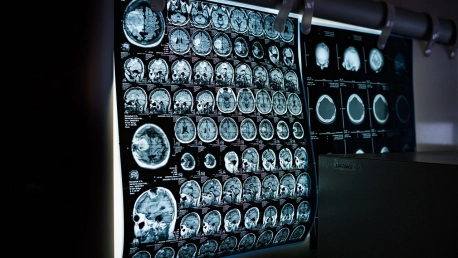The advent of artificial intelligence (AI) in medical diagnostics has promised significant advancements in healthcare delivery, particularly through the analysis of medical images such as chest X-rays. However, the development and deployment of these AI systems also raise crucial concerns about fairness and accuracy across diverse demographic groups, including race and gender. As AI becomes more integrated into medical workflows, understanding and addressing these biases is critical for ensuring that all patients receive equitable and accurate healthcare.
Biases in AI Medical Diagnostics
Artificial intelligence in medical diagnostics holds immense promise for improving patient outcomes, yet it is not without flaws. Research has consistently shown that AI models trained to analyze medical images, like chest X-rays, can exhibit performance biases that disproportionately impact women and people of color. These biases often manifest as disparities in diagnostic accuracy, potentially leading to misdiagnoses or delayed treatment for affected groups. The root of this issue lies in the demographic data used to train these models. Often, datasets lack sufficient diversity, leading to uneven performance when these AIs are deployed across a broader, more varied patient population.The problem is further compounded by demographic shortcuts used by these models. Instead of focusing solely on the essential medical features within the images, AI systems may leverage demographic information to make predictions. While this practice might improve performance for the data they were initially trained on, it typically results in reduced accuracy for underrepresented or differently represented groups in the training data. Consequently, the fairness of AI-aided medical diagnostics becomes a critical concern that healthcare providers must address to ensure that all patients receive accurate and unbiased diagnoses.
Demographic Prediction by AI Models
One of the most startling findings in the research is the AI models’ ability to predict demographic information such as race or gender from chest X-rays—a task that human radiologists cannot perform. This capability highlights a unique and somewhat unsettling feature of machine learning models. However, this ability is a double-edged sword. The same algorithms and model architectures that enable demographic predictions also tend to reinforce and perpetuate existing biases within the diagnostic processes.The precise mechanisms by which these models infer demographic information from medical images remain unclear, but their implications are significant. When AI models leverage demographic data to aid in diagnoses, they often inadvertently skew diagnostic outputs unfavorably for certain demographic groups. This tendency to reinforce biases underscores the importance of developing transparent and explainable AI systems. With transparent systems, healthcare providers can better understand how specific predictions are made, which is crucial for identifying and addressing any potential sources of bias proactively.
Debiasing Techniques in AI Models
Leaders in AI and healthcare are aware of the critical need to address biases in AI diagnostics, and researchers are actively exploring various debiasing techniques to tackle these issues. Two promising approaches include subgroup robustness and group adversarial methods. Subgroup robustness focuses on enhancing a model’s performance uniformly across different demographic groups, ensuring that no single group is disproportionately disadvantaged. On the other hand, group adversarial methods actively penalize the model for exhibiting biases, effectively nudging it toward more equitable performance across all demographics.While these debiasing techniques show significant potential in experimental settings, their effectiveness often varies depending on the dataset used. For instance, subgroup robustness and group adversarial methods may significantly reduce fairness gaps within the training datasets, but their performance can falter when applied to new, unseen data. This variability underscores the ongoing challenges in developing universally applicable debiasing strategies. Thus, continual refinement and validation of these methods are necessary to achieve the desired level of fairness and accuracy in diverse real-world settings.
The Challenge of Generalizability
A persistent challenge in the deployment of AI in medical diagnostics is the generalizability of these models. AI systems trained on datasets from one hospital or demographic group may not perform well when applied to a different population. This lack of generalizability can lead to significant discrepancies in diagnostic accuracy, which in turn undermines the reliability and fairness of AI tools. Effectively, models that work excellently in one setting may fail to deliver consistent results in another, posing a significant risk to healthcare delivery.To address this issue, healthcare institutions must adopt rigorous validation protocols and perform extensive testing of AI models on diverse patient populations before integrating them into clinical practice. By evaluating models locally, providers can identify performance disparities early and make necessary adjustments to ensure that AI diagnostics deliver consistent and accurate results for all patients, regardless of their demographic backgrounds. This approach not only enhances the reliability of AI in medical diagnostics but also fosters greater trust in these technologies among healthcare providers and patients alike.
The Necessity of Local Validation
Local validation of AI models is crucial in ensuring their fairness and accuracy across different demographic groups. Before deploying an AI tool in a clinical setting, hospitals and healthcare providers should thoroughly assess its performance on their own patient data. This step is essential not only to identify but also to rectify any biases that may lead to disparities in diagnostic outcomes among various patient populations.By implementing local validation, healthcare institutions can tailor AI models to their specific patient populations, enhancing the models’ reliability and effectiveness. This approach also fosters greater transparency and accountability in AI diagnostics, as providers can directly observe and address any fairness issues that arise during clinical applications. Ensuring that AI models perform equitably across all demographics is a vital step toward achieving truly inclusive and unbiased healthcare. Local validation is not just a technological necessity but also a moral imperative that underscores the commitment to equitable medical treatment for all.
Continuous Development and Monitoring
The emergence of artificial intelligence (AI) in medical diagnostics has heralded significant advancements in healthcare, especially through the analysis of medical images such as chest X-rays. AI has the potential to transform medical workflows, making processes more efficient and accurate. However, the implementation of these AI systems also brings to the forefront vital concerns regarding fairness and precision across different demographic groups, including various races and genders.As AI becomes increasingly embedded in medical practices, it is imperative to recognize and address the biases that may be inherent in these systems. These biases can arise from the data used to train AI models, which may not adequately represent the diversity of the patient population. For AI to truly enhance healthcare for everyone, it must be as accurate for one demographic as it is for another.Ensuring fairness necessitates rigorous testing and validation of AI tools across diverse groups to identify and rectify disparities. By doing so, we can uphold the promise of AI in providing equitable healthcare. Understanding and mitigating these biases is essential for achieving a healthcare system where all patients receive fair and precise medical diagnoses, regardless of their race or gender. Therefore, continual assessment and improvement of AI systems are critical to their successful integration into the medical field.









